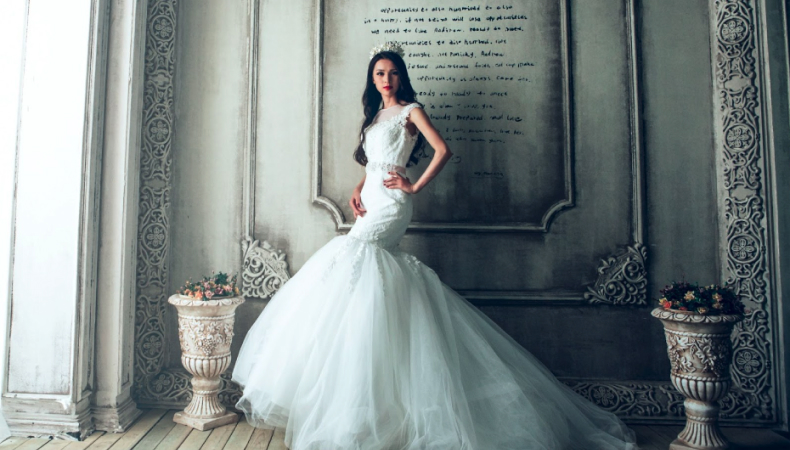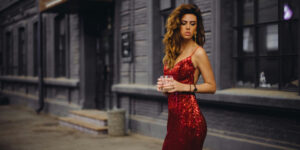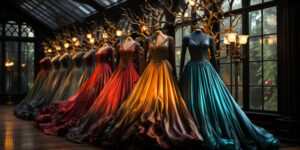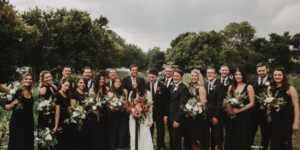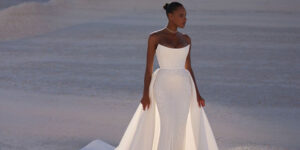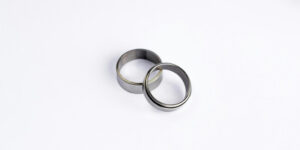The journey of Wedding Dress through time is a fascinating tale of evolution, mirroring the changing tides of fashion and societal norms.Photo by Pixabay:
A wedding dress is more than just attire; it’s a statement of individuality, a symbol of the love story being celebrated, and a nod to the fashion sensibilities of the era.
In an age where trends are as diverse as the brides themselves, finding a dress that resonates with one’s personal style while nodding to contemporary trends is both a challenge and an exciting journey for modern brides.
Tracing the Origins: The Evolution of Wedding Attire
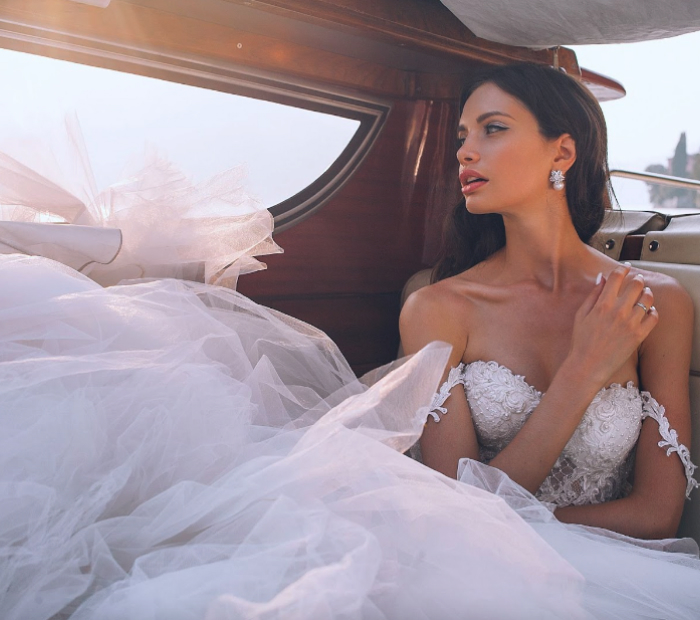
➤ The Dawn of Bridal Fashion
The concept of a ‘wedding dress’ has roots that run deep into history, with the earliest recorded instances dating back to ancient civilizations. However, it was during the Middle Ages that wedding dresses began to take on more significance.
Initially, brides simply wore their best dress, but over time, those who could afford it started to choose dresses that reflected their social status, often adorned with luxurious fabrics and colors.
➤ Societal Influence on Bridal Attire
By the Victorian era, white became the preferred choice for wedding dresses, a trend popularized by Queen Victoria herself. This period saw wedding dresses as symbols of purity and innocence, reflecting the societal values of the time.
Fast forward to the 20th century, where each decade brought its own flavor to bridal fashion, influenced by the socio-economic conditions, cultural shifts, and even the prevailing political climate.
➤ Fashion Trends Shaping Bridal Wear
The latter part of the 20th century and the early 21st century witnessed a significant diversification in wedding dress styles.
From the minimalist dresses of the 1990s to the extravagant gowns of the early 2000s, bridal fashion has continually evolved to reflect the ever-changing trends in the fashion world.
Today, the influence of global fashion trends, accessibility to diverse designs through digital platforms, and the rise of individualism have further diversified the range of choices available to brides. You can even take an online quiz to decide on the perfect style of your wedding dress, or install an app to help you with everything wedding.
Sacred Influence: The Role of Faith in Bridal Fashion
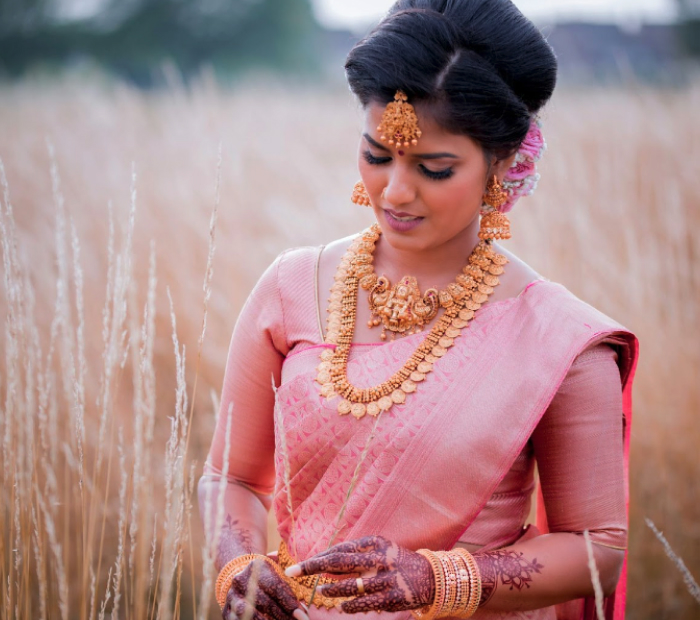
➤ Historical Foundations of Faith in Bridal Wear
The influence of faith on bridal fashion is as old as the institution of marriage itself, with each religion imparting its own unique traditions and customs onto wedding attire.
In many cultures, the wedding dress is not just a symbol of beauty and celebration but also a reflection of religious and spiritual significance.
For instance, in Western Christian traditions, the white wedding dress has long been associated with purity and innocence, concepts deeply rooted in religious beliefs. This tradition, popularized in the 19th century, has since become a staple in many Christian weddings.
Similarly, in Eastern cultures, red is often the color of choice for brides, symbolizing good luck and auspiciousness, which are important elements in religious and cultural ceremonies.
➤ Contemporary Religious Influences on Wedding Attire
Moving into the contemporary era, while some traditions remain steadfast, there has been a notable shift towards more inclusive and diverse expressions of faith in bridal fashion.
Modern brides belonging to various faiths are increasingly blending traditional elements with contemporary styles to create wedding dresses that are both respectful of their religious heritage and reflective of their personal style.
In Islamic weddings, for example, modesty remains a key consideration, with many Muslim brides opting for elegant and modest gowns that align with their cultural and religious values.
Meanwhile, in Hindu weddings, the bridal lehenga often features intricate embroidery and vibrant colors, symbolizing the richness of the culture and the joy of the occasion.
Similarly, Jewish bridal fashion often incorporates a veil or a covered head, reflecting the modesty and dignity that are valued in Jewish marital traditions. However, contemporary Jewish brides often choose designs that balance these traditional elements with modern aesthetics.
Timeless Elegance Meets Modern Flair
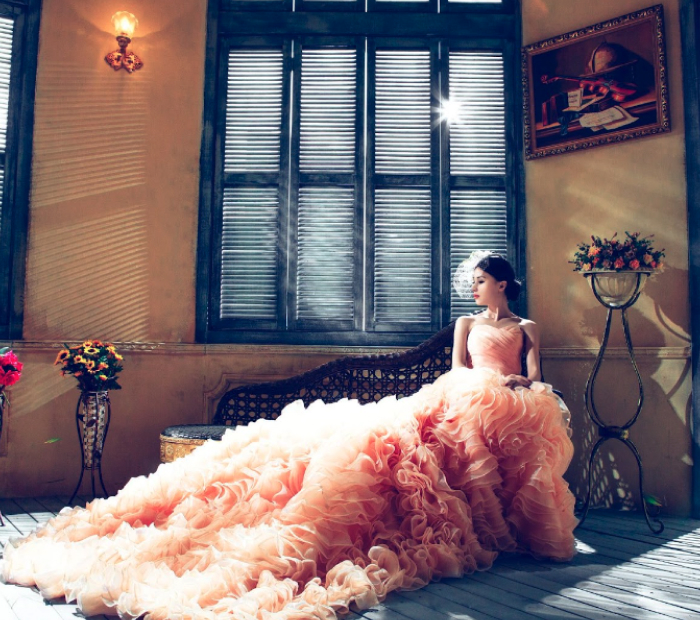
➤ The Renaissance of Historical Styles
The allure of historical wedding dress styles continues to inspire modern bridal fashion. Designers often look back to various epochs for inspiration, reinterpreting classic elements with a contemporary twist.
- Victorian Influence: The intricate lacework and corseted bodices of the Victorian era have seen a resurgence, now blended with modern materials and cuts.
- Roaring Twenties Revival: The 1920s flapper dresses, characterized by their dropped waists and embellishments, have inspired a line of sleek, beaded gowns.
- Bohemian Rhapsody: The free-spirited styles of the 1970s, with their flowy fabrics and floral motifs, continue to influence the boho-chic bridal looks.
➤ Adapting Classics: The 2023 Ball Gown
Ball gowns, a perennial favorite, have been reimagined in 2023. While maintaining their grandeur and volume, contemporary designs incorporate novel elements like:
- Textural diversity, with layers of tulle, lace, or organza.
- Modern embellishments such as understated beadwork or 3D floral appliqués.
- Hybrid silhouettes, blending the classic ball gown structure with unexpected details like pockets or convertible skirts.
Breaking Conventions: The Advent of Unconventional Wedding Styles
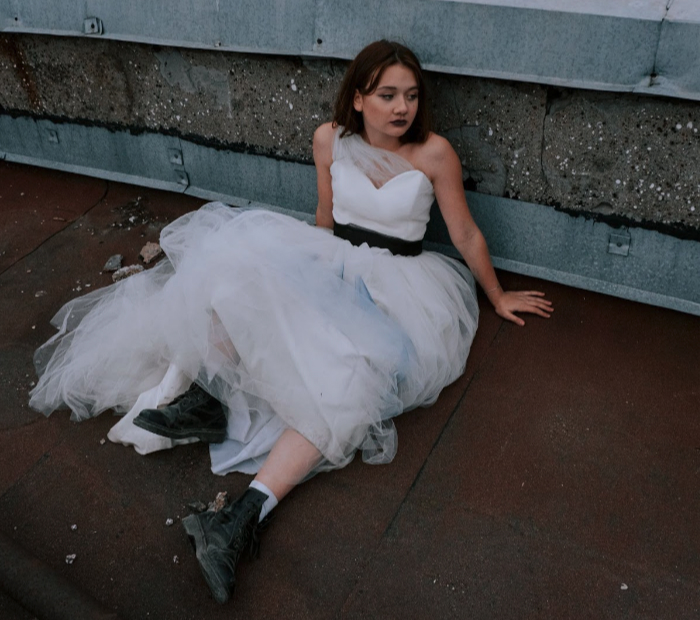
Recent years have witnessed a significant shift towards unconventional and non-traditional wedding dresses. This movement reflects a broader societal embrace of individuality and self-expression.
- Colorful Expressions: Moving away from traditional white, brides are opting for dresses in blush, blue, and even bolder colors like red or black.
- Unique Textures and Patterns: Designers are experimenting with unusual fabrics, from feather accents to bold, graphic prints.
- Mix-and-Match Styles: Separates, such as crop top and skirt combos, offer a modern take on bridal wear, allowing for customization and versatility.
➤ The Bold and the Beautiful
This era of bridal fashion is marked by a fearless embrace of bold designs, textures, colors, and silhouettes. Brides are increasingly seeking dresses that make a statement and reflect their personality.
- Intricate embroidery and whimsical lace patterns.
- Dramatic silhouettes, from oversized bows to asymmetrical necklines.
- Adventurous details like deep V-necks, thigh-high slits, and transparent panels.
Cultural Waves in Bridal Fashion
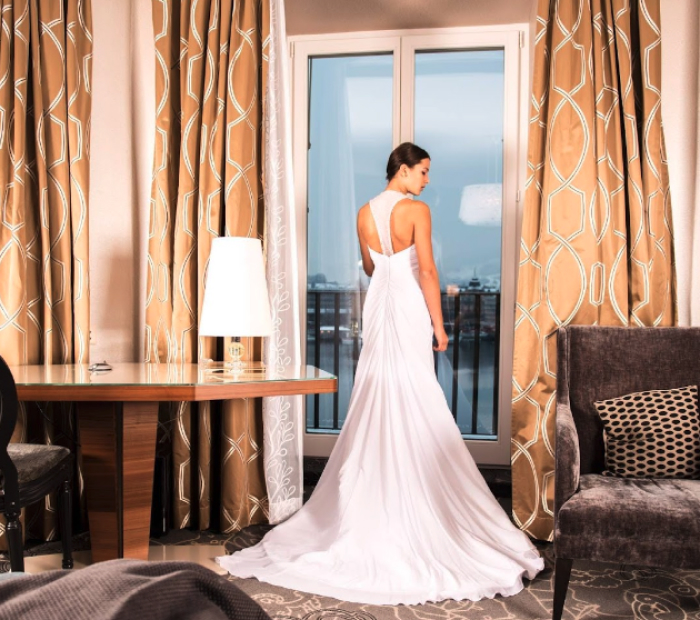
➤ The Global Fashion Influence
The wedding dress styles of today are significantly influenced by global cultural trends and the interconnected nature of the fashion industry. This global perspective has introduced a variety of styles and traditions into the mainstream bridal fashion scene.
- East Meets West: The fusion of Eastern and Western design elements, like mandarin collars on gowns or saree-inspired draping techniques.
- Cultural Celebrations: Incorporation of traditional garments or motifs from various cultures, paying homage to the bride’s heritage or inspired by global fashion trends.
➤ Media and Celebrity Impact
The role of media and celebrity in shaping bridal fashion trends cannot be overstated. High-profile weddings and fashion shows often set the tone for upcoming bridal trends.
- Celebrity Wedding Effect: The wedding dresses of celebrities often become instant trends. For example, a celebrity’s choice of a minimalist gown can spark a surge in similar styles.
- Runway to Aisle: Bridal fashion weeks and designer showcases are critical in introducing new trends, which are often quickly adopted by mainstream bridal labels.
Glitz and Glamour: Today’s Love for Luster
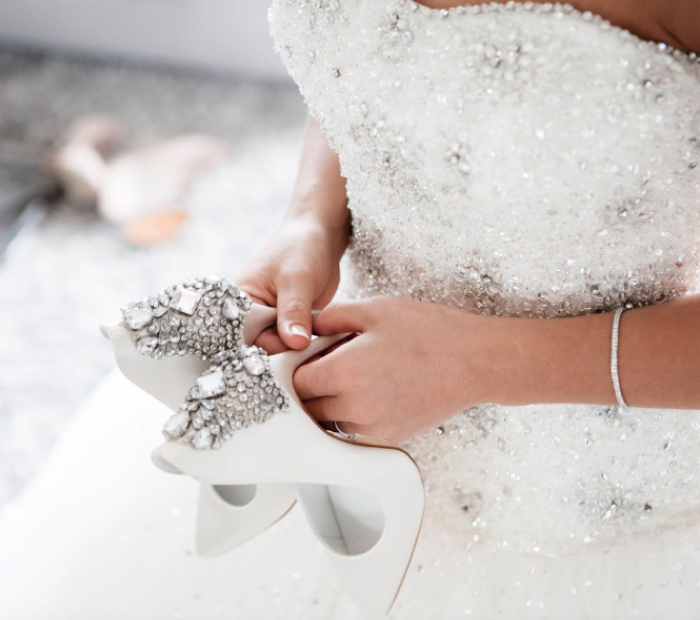
The modern bridal scene is witnessing a sparkling revolution, with an increasing number of brides gravitating towards gowns that shimmer and shine. This trend is a celebration of glamor and opulence, featuring gowns adorned with sequins, beadwork, and crystal embellishments.
These elements are being thoughtfully integrated into wedding dresses, ranging from subtle hints of sparkle to gowns entirely encrusted in glittering details. This trend caters not just to the traditional bride but also to those who wish to make a bold, fashion-forward statement on their special day.
Democratizing Luxury: Fashion for All
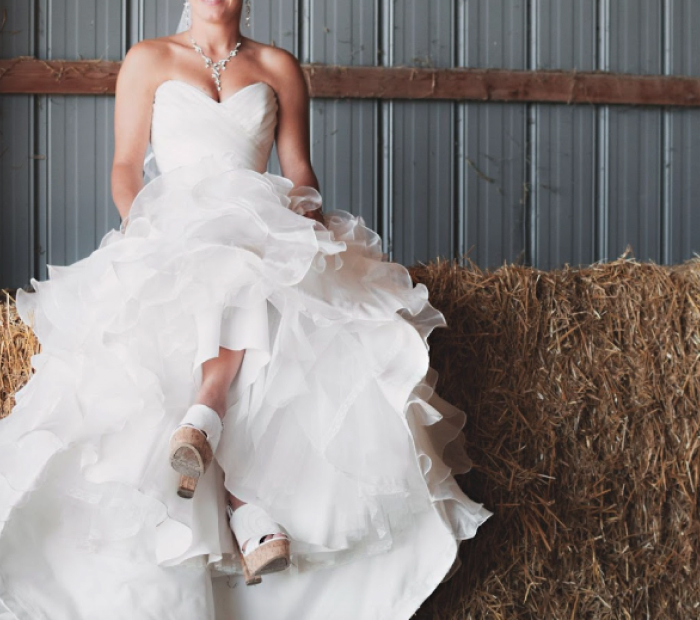
A pivotal shift in the bridal fashion industry is the movement towards making luxurious wedding dresses more accessible.
Designers and brands are increasingly focusing on creating high-fashion bridalwear that is affordable, ensuring that luxury is not confined to a specific economic class. This democratization of bridal fashion is a step towards inclusivity, recognizing that every bride deserves to wear her dream gown without financial constraints.
It also reflects a growing awareness within the industry of the diverse needs and backgrounds of modern brides, leading to a wider range of styles, sizes, and price points.
To the modern bride, selecting a wedding dress is more than a sartorial choice; it is a means of expressing her identity and fashion sensibilities. It’s an opportunity to embrace both the timeless elegance of the past and the bold, innovative trends of the present.

